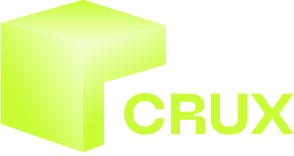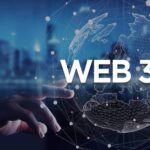
The Promise of Web 3 for Education and eLearning
- summy Morphe
- May 9, 2023
- Web3.0
- e learning, Web 3
- 0 Comments
Introduction
Web 3 is an evolution of the internet that seeks to create a more decentralized and user-centric experience, built on a foundation of decentralized technologies like blockchain, peer-to-peer networks, and distributed storage. This new paradigm has the potential to transform a wide range of industries, including education and eLearning. In this article, we’ll explore the promise of Web 3 for education and eLearning, including its potential to create a more open and accessible learning ecosystem, foster collaboration and innovation, and enhance the security and privacy of student data.
A More Open and Accessible Learning Ecosystem
One of the most promising aspects of Web 3 for education is its potential to create a more open and accessible learning ecosystem. By leveraging decentralized technologies like blockchain and peer-to-peer networks, Web 3 can create a more decentralized and user-centric educational system, where students have greater control over their own learning and access to a wider range of resources and tools.
- Decentralized Content Creation and Distribution
Web 3 technologies like blockchain and IPFS (InterPlanetary File System) can be used to create decentralized content creation and distribution platforms, allowing students and educators to create and share educational content directly, without the need for intermediaries. This can create a more open and accessible learning ecosystem, with greater opportunities for collaboration and innovation.
- Open Credentials and Learning Pathways
Web 3 can also enable the creation of open and decentralized credentialing systems, allowing students to earn and share their credentials across different platforms and educational institutions. This can create more flexible and accessible learning pathways, allowing students to build their own personalized learning journeys.
Fostering Collaboration and Innovation

Another key advantage of Web 3 for education is its potential to foster collaboration and innovation. By creating a more open and decentralized learning ecosystem, Web 3 can enable greater collaboration among students and educators, while also promoting innovation in teaching and learning methods.
- Decentralized Learning Communities
Web 3 can enable the creation of decentralized learning communities, where students and educators can collaborate and share resources across different platforms and networks. These communities can be built around shared interests, goals, or learning objectives, and can provide a more personalized and engaging learning experience for students.
- Gamification and Incentivization
Web 3 can also leverage gamification and incentivization techniques to promote engagement and motivation among students. By creating decentralized reward systems and peer-to-peer networks, Web 3 can encourage students to participate in learning activities, share resources, and collaborate with others.
Enhancing Security and Privacy
Finally, Web 3 can enhance the security and privacy of student data, which is a key concern in the education sector. By leveraging decentralized technologies like blockchain and distributed storage, Web 3 can create more secure and private learning environments, where students have greater control over their own data and can protect their personal information from unauthorized access.
- Decentralized Identity and Authentication
Web 3 can enable the creation of decentralized identity and authentication systems, where students can control and manage their own identities and credentials without the need for centralized authorities. This can enhance the security and privacy of student data, while also providing greater control and ownership for students over their own information.
- Encrypted Data Storage and Sharing
Web 3 can also leverage distributed storage and encryption technologies to create more secure and private data storage and sharing systems. This can protect sensitive student data from unauthorized access, while also ensuring that students have greater control over who can access their personal information.
Microlearning and Personalized Learning Experiences
Web 3 can enable more personalized and flexible learning experiences, with the potential to create more efficient and effective learning outcomes. By leveraging decentralized technologies, Web 3 can enable the creation of microlearning modules that can be accessed on-demand and customized to individual student needs.
Decentralized Assessment and Certification
Web 3 can also enable more transparent and decentralized assessment and certification systems, allowing students to earn and share their credentials across different platforms and educational institutions. This can create more flexible and accessible learning pathways, while also promoting greater transparency and accountability in the assessment process.
New Opportunities for Collaboration and Partnership
The decentralized nature of Web 3 can create new opportunities for collaboration and partnership among different stakeholders in the education and eLearning ecosystem. For example, blockchain-based marketplaces can enable educators and eLearning providers to sell and exchange educational content and resources directly, without the need for intermediaries.
The Role of Digital Identity in Web 3 Education
Digital identity is a key component of Web 3 education, enabling students to create and control their own digital personas and credentials. Decentralized identity systems, such as the DID (Decentralized Identity) standard, can help to ensure that students have greater control over their own identities and credentials, while also enhancing the security and privacy of their personal information.
The Potential of NFTs in Education
Non-fungible tokens (NFTs) are a type of blockchain-based digital asset that can be used to represent ownership of unique items, such as artwork or collectibles. NFTs have the potential to revolutionize education by enabling the creation and ownership of unique, digital learning assets, such as certificates, badges, or educational games.
Decentralized Learning Analytics and Metrics
Web 3 can enable the creation of more decentralized and transparent learning analytics and metrics systems, providing educators and students with more accurate and actionable data on student performance and engagement. By leveraging blockchain and distributed ledger technologies, Web 3 can create more secure and tamper-proof metrics systems, while also ensuring greater privacy and data protection.
Web 3 and the Future of Work
The skills and competencies needed in the future of work are rapidly evolving, with new technologies and job roles emerging all the time. Web 3 can help to prepare students for this uncertain future by providing more personalized and adaptable learning experiences, as well as more transparent and verifiable credentialing and certification systems.
Web 3 and Global Education Equity
Web 3 has the potential to create a more equitable and accessible global education ecosystem, by providing greater access to learning resources and tools, as well as more transparent and decentralized credentialing and certification systems. This can help to close the education gap between different regions and socioeconomic groups, creating a more level playing field for all learners.
Decentralized Learning Management Systems
Web 3 can enable the creation of decentralized learning management systems, providing a more open and flexible platform for educators and students to manage and track their learning progress. These systems can leverage blockchain and other decentralized technologies to create more secure and transparent learning environments, while also enabling more personalized and adaptive learning experiences.
Web 3 and Global Collaboration
Web 3 can enable more global collaboration among educators and students, creating more opportunities for cross-cultural learning and exchange. Decentralized technologies like blockchain and peer-to-peer networks can help to create more trust and transparency in these collaborations, while also enhancing security and privacy.
Web 3 and the Future of Teaching
Web 3 has the potential to transform the way we think about teaching and learning, by creating more decentralized and collaborative teaching environments that leverage the strengths of both educators and students. By enabling more personalized and adaptive learning experiences, Web 3 can create a more student-centered educational system that empowers learners to take control of their own education.
The Role of DAOs in Education
Decentralized autonomous organizations (DAOs) are a type of blockchain-based organization that can operate without centralized control or management. DAOs have the potential to transform education by enabling more decentralized and collaborative decision-making among educators and students, as well as providing a more transparent and accountable governance model.
Web 3 and Peer-to-Peer Learning Networks
Web 3 can enable the creation of decentralized and peer-to-peer learning networks, providing students with more opportunities to connect and collaborate with peers from around the world. These networks can leverage blockchain and other decentralized technologies to create more secure and private learning environments, while also fostering greater innovation and creativity.
Web 3 and the Democratization of Education
Web 3 has the potential to democratize education by providing greater access to learning resources and tools for learners of all ages and backgrounds. By leveraging blockchain and other decentralized technologies, Web 3 can create more transparent and accessible educational systems, enabling learners to take control of their own learning journey.
The Role of Web 3 in Continuing Education
Web 3 can enable more flexible and accessible continuing education opportunities, providing learners with more opportunities to upskill and reskill in the rapidly changing job market. By leveraging decentralized technologies, Web 3 can create more personalized and adaptive learning experiences, as well as more transparent and verifiable credentialing and certification systems.
Web 3 and the Future of Assessment
Web 3 has the potential to transform the way we think about assessment in education, by enabling more transparent and decentralized assessment and evaluation systems. By leveraging blockchain and other decentralized technologies, Web 3 can create more secure and tamper-proof assessment systems, while also providing greater privacy and data protection for students.
Conclusion
Web 3 has the potential to revolutionize the education and eLearning industry, creating a more open, accessible, and user-centric learning ecosystem. By leveraging decentralized technologies like blockchain, peer-to-peer networks, and distributed storage, Web 3 can enhance collaboration and innovation among students and educators, create more personalized and engaging learning experiences, and enhance the security and privacy of student data. While there are still significant technical and political challenges to overcome, the possibilities for positive impact and transformational change are enormous. As the Web 3 ecosystem continues to evolve, it’s important for educators and eLearning professionals to stay informed and engaged, and to explore the potential of these technologies to create a better future for education.


